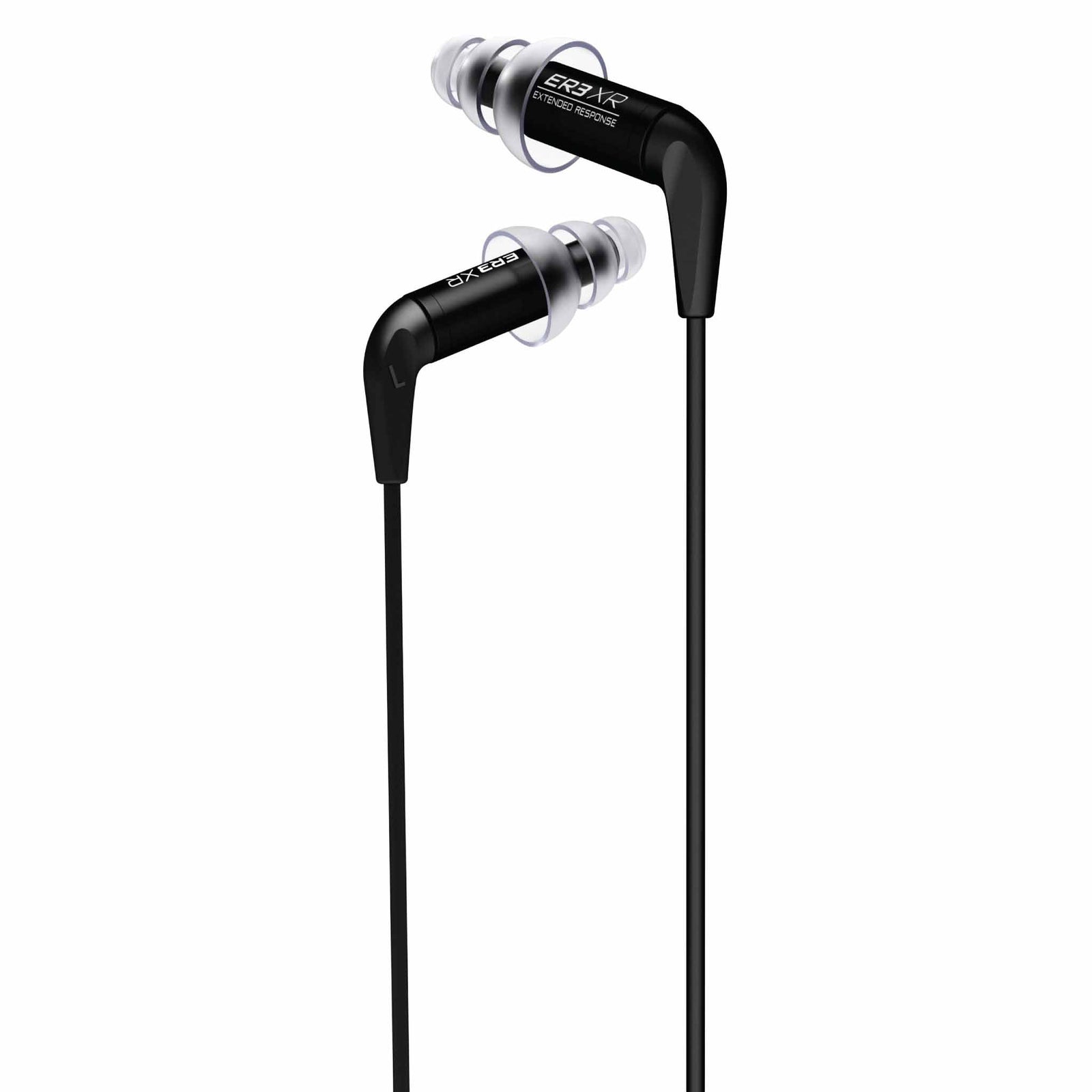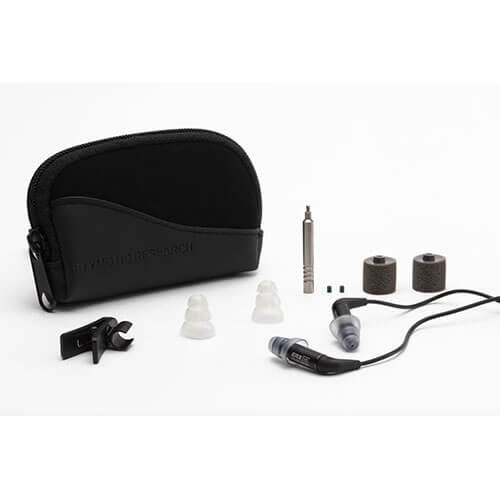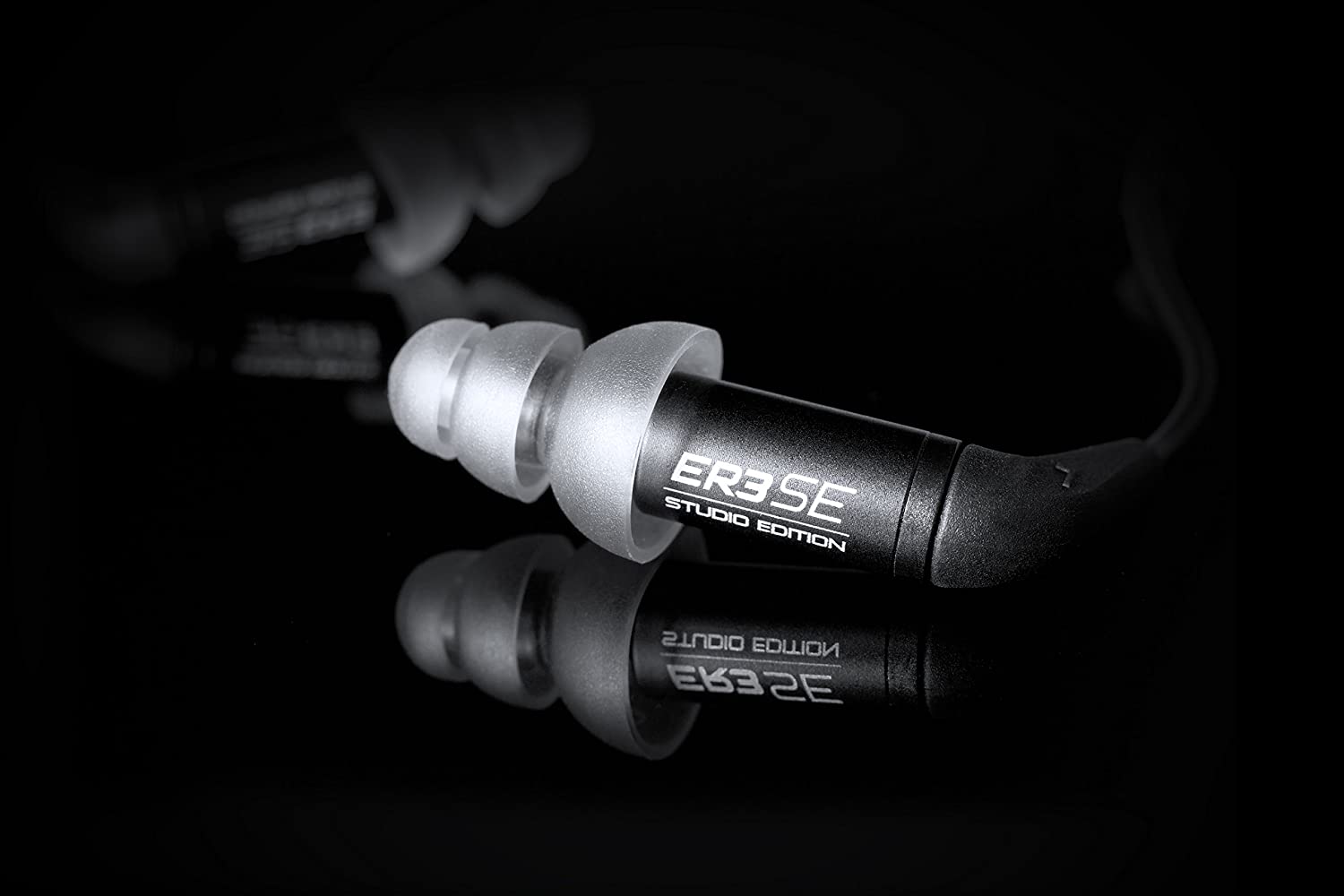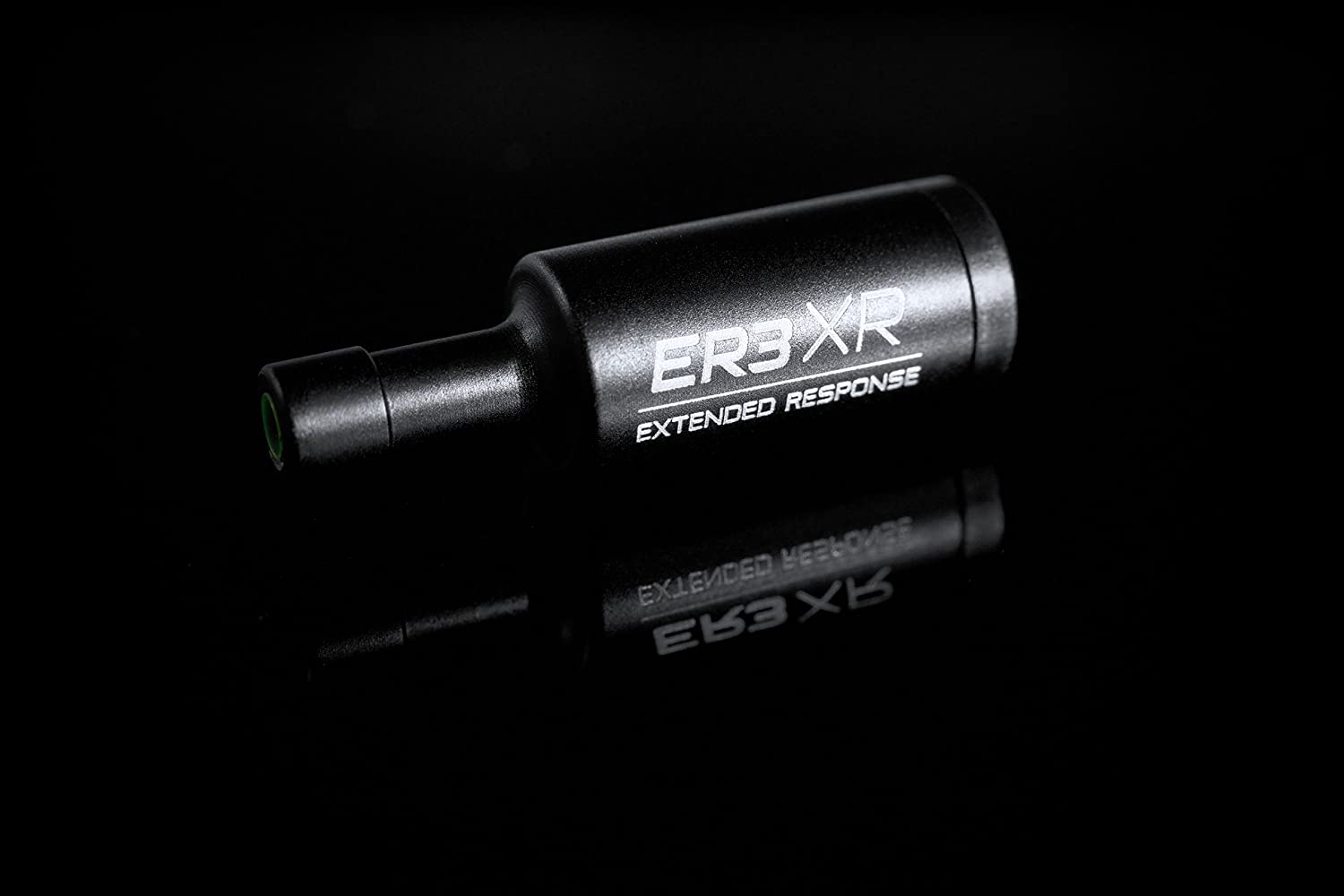





ER3XR is the highest-sensitivity single driver in-ear monitor. The IEM shells are made of anodized aluminum, CNC machined with extremely tight tolerances. Using a single Balanced Armature (BA) driver allows for extremely accurate IEM without the added complexity of crossovers, and helps keep the aluminum body small and slim. Included is a user-replaceable cable.
Etymotic IEMs are world renowned for their class-leading passive isolation, providing 35-42 dB attenuation (depending on eartips used and the depth of insertion). For comparison, most custom IEMs provide approx. 25-28dB attenuation and foam ear plugs attenuate up to 32 dB.
The ER3XR is ideal for audiophiles and consumers on a budget, who are looking for in-ear monitors that are easy to drive, while offering accurate audio reproduction with more bass than the neutral ER3SE.
g for in-ear monitors that are easy to drive while offering accurate audio reproduction.
Which ER3 is right for you?
Both ER3 models, the ER3SE and ER3XR, use the same high-sensitivity low-impedance Balanced Armature (BA) drivers. That means no amplifier is required to drive the ER3 IEMs properly. The only difference between the 2 models is the tuning of the lower (bass) frequencies. The “Studio Edition” ER3SE is tuned to have a flat frequency response. The “eXtended Response” ER3XR is tuned to be high energy with emphasized bass, adding 1-2dB to the mid-bass and 3-4dB to the sub-bass. The rest of the frequencies are practically identical to the ER3SE.
ER3SE is a great choice for audio creators and musicians on a budget, who require a precise and neutral sound reproduction. ER3SE is also the IEM of choice for prosumers who prefer to listen to their music exactly the way it was recorded.
ER3XR is favored by those who enjoy the extra bass presence and body when listening to their music. The extra bass is done tastefully without turning the ER3XR to a bass heavy IEM.
Frequency response graphs and Etymotic’s target:
Etymotic’s target frequency response graph represents a “perceptibly flat” frequency response. Our goal is to have a flat frequency response curve when the music notes hit your eardrums. To achieve that, we need to account for the resonance inside the average ear canal, since IEMs bypass the outer ear structure. The result is the need for higher SPL in the 2-5k region (lower treble) for compensating said resonance. That is the reason for the “hump” in that region. The target curve that Etymotic is using for tuning our IEMs differs slightly from the Harmon preference curve. It was developed in-house more than 20 years ago, leveraging on our human hearing expertise and acoustics research.
Accurate Earphone reproduction
When tuning in-ear monitors to accurately reproduce a recording of a live performance, our goal is for the sound hitting the eardrums to be identical to that at the original performance. To achieve this, the acoustic properties of the ear must be factored in. The acoustic resonance and horn effects of the ear change a flat audio signal entering the open ear into sound with a (2700 Hz) high-frequency boost, which is the same response heard at the eardrum in a typical ear. That is the reason for the “hump” in the frequency response graph, which assures the eardrums perceive a perfectly flat frequency response for all frequencies.
In the box
- In Ear Monitors
- Detachable 4 ft. cable with 3.5mm gold plated stereo plug
- Assortment of eartips: 4 Dual Flange Silicone Pairs: S, M, L, XL. 2 Triple Flange Pairs: Standard and Large. and 2 Foam Pairs: Standard
- Filter removal tool and replacement filters to protect the BA drivers from ear wax·
- Shirt clip
- Zippered storage case
- Channel-Matching Compliance certificate 2.
Specifications
- Frequency Response: 20 Hz – 16 kHz
- Transducers: Single high-performance balanced armature per channel.
- Noise Isolation: 35dB using silicone ear tips, 42dB using foam ear tips
- Impedance: 22 Ohms @ 1kHz
- Sensitivity: 102 dB @ 1kHz, 1mW
- Maximum Output (SPL): 120 dB
- Cable: Detachable 4 ft cable with MMCX connectors
- User Replaceable ACCU-Filters: Yes






